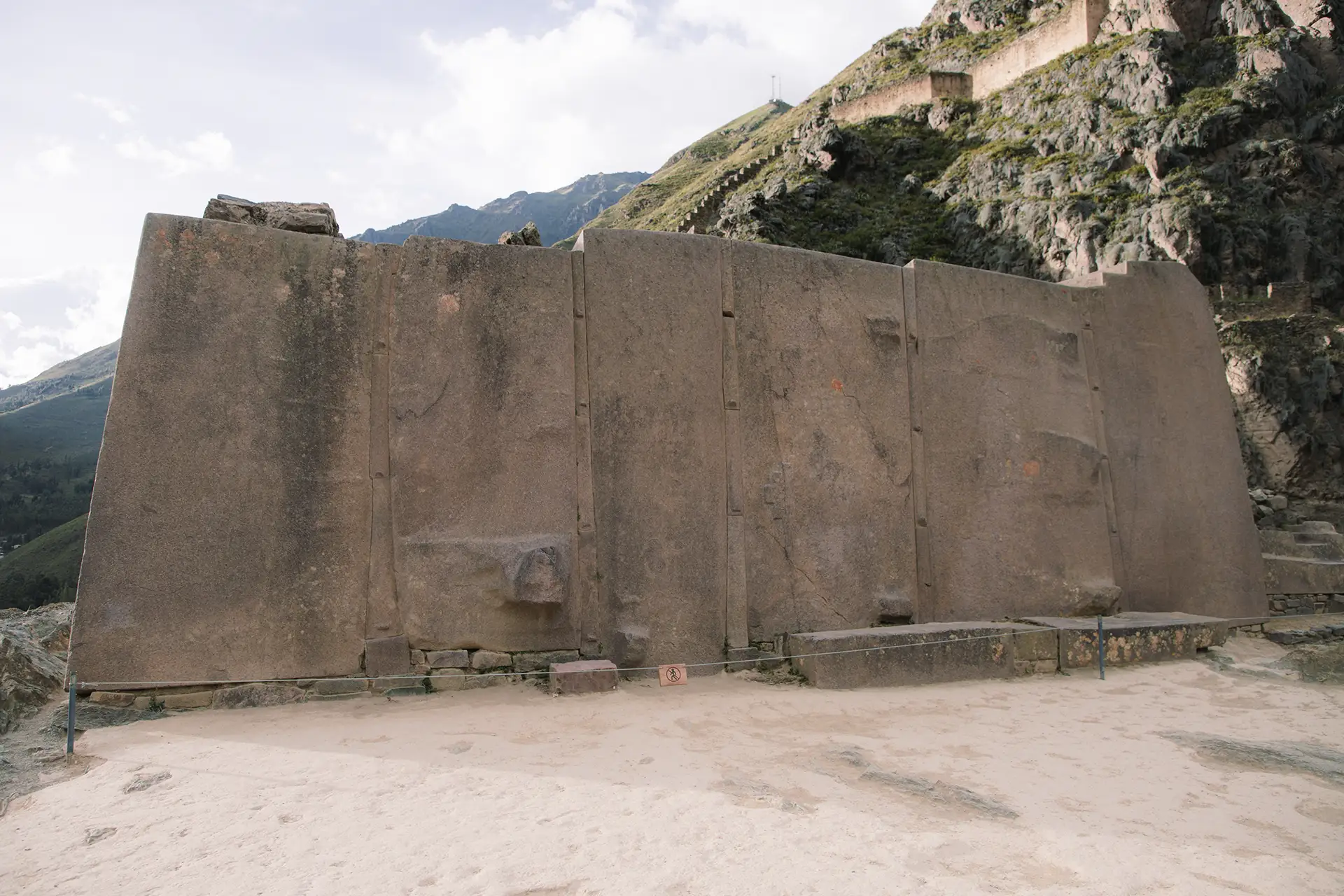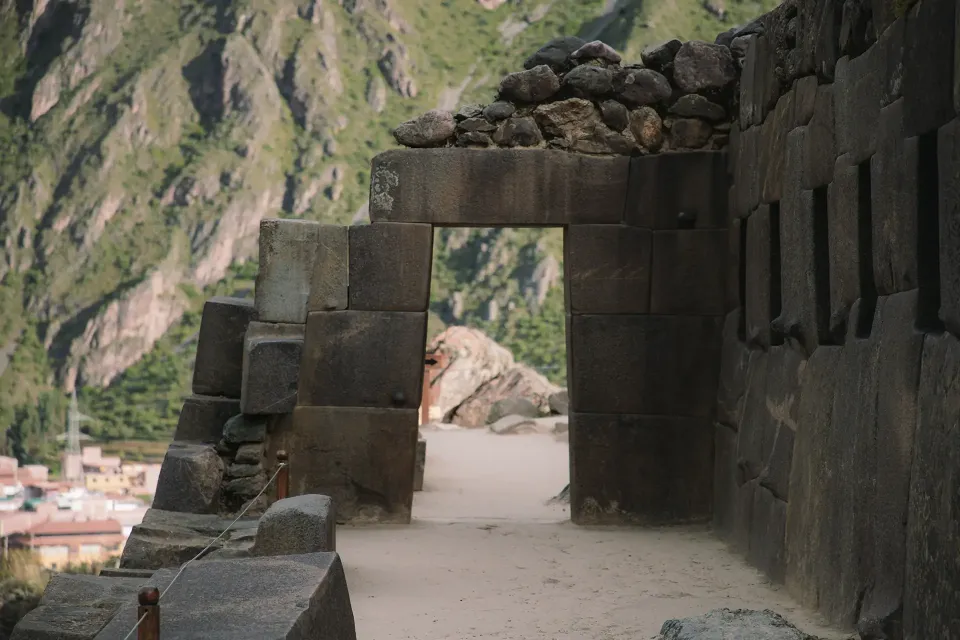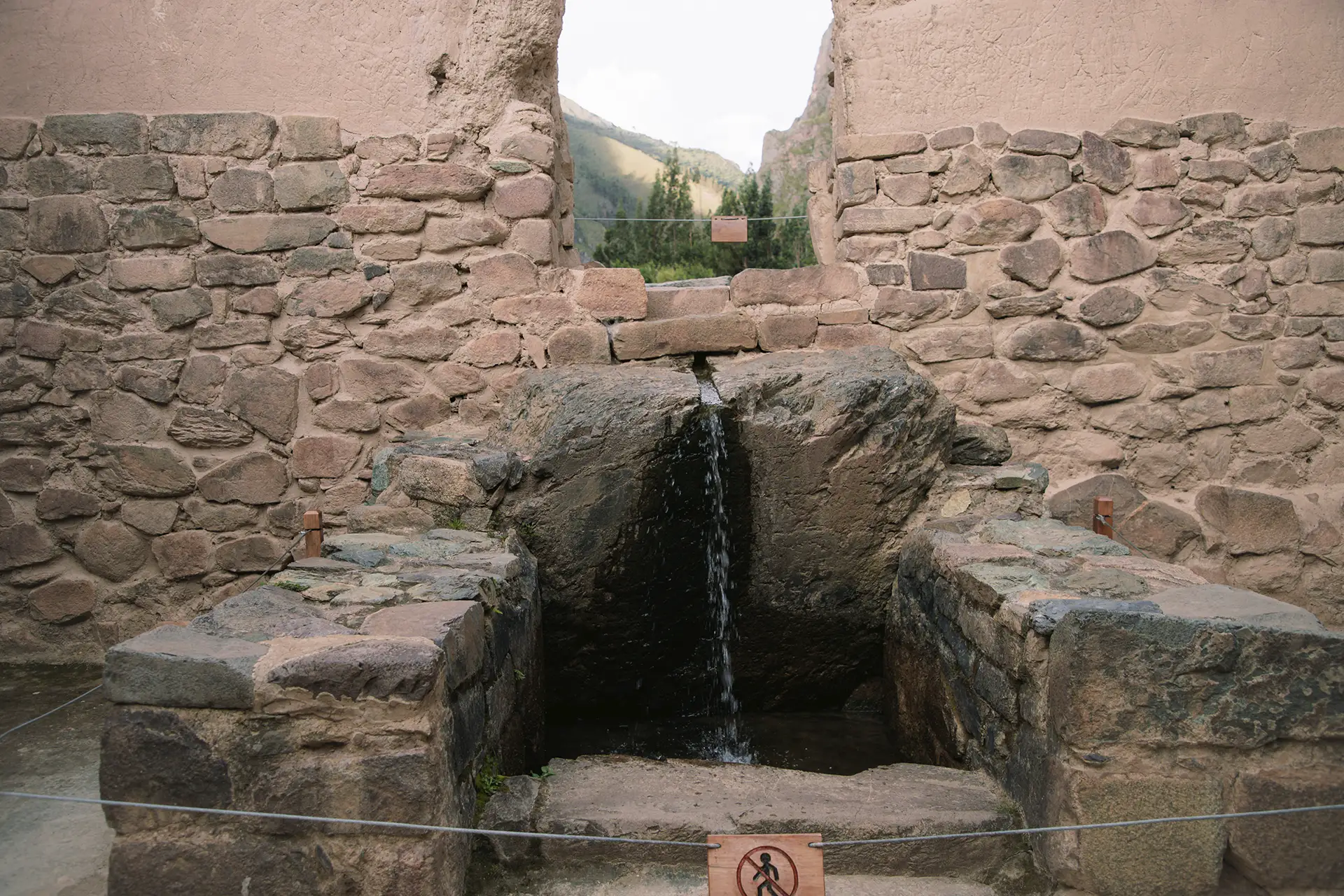Ollantaytambo stands on the right side of the Vilcanota River, in the Sacred Valley of the Incas. You will find it as the most important fortress from the Inca time. It was a place for religion, government, and the military. The Incas built huge, strong structures here. Ollantaytambo keeps its old Inca city design, and today, it’s the most important town in the Sacred Valley. People even call it the “living city” because people still live there.
Where is Ollantaytambo?
You can find Ollantaytambo 75 kilometers northeast of Cusco, in the Urubamba Province. It sits at 2,841 meters above sea level, between the Vilcanota and Patacancha rivers.
Flora and Fauna
- In Ollantaytambo, you will see many plants. Some are wild, others are native or exotic. You might spot trees like Chachacomo, Tara, and Molle. There are also Retama and Eucalyptus trees.
- Ollantaytambo has lots of animals. You may see birds like the partridge, canastero, and Andean gull. You could also spot bigger animals like the puma or smaller ones like the hummingbird and owl.
The Climate
Ollantaytambo has warm and mild weather. The days can be warm, but nights get cooler. The average temperature is between 11 and 16ºC. During winter, between May and August, it can drop as low as -4ºC. From December to March, rain falls more often.
The best time to visit Ollantaytambo
You’ll want to visit Ollantaytambo during the dry season. With little rain, you can see its ancient beauty clearly. Plan your trip between April and September. This is when the weather is best for exploring.
About the Archaeological Site
Meaning of Ollantaytambo
The name Ollantaytambo has a deep meaning. In Aymara, "UllaTawi" means “place to watch from above,” like a lookout. In Quechua, it comes from the story of "Ollantay," and "tambo" means resting place.
History of Ollantaytambo
Ollantaytambo started around 1,200 B.C. when the Tampus, the first people here, made their home on the lower part of Bandolista Hill. They built a small kingdom and grew crops. But Inca Pachacutec later destroyed it and created a new city.
In the 15th century, Pachacutec, the ninth Inca ruler, took over the Tampus’ land. He built a new city for the Inca nobility. This city had two main parts: Qosqo Ayllu and Araccama Ayllu. You will find plazas, palaces, and terraces for farming in these areas. There are also storage buildings and strong walls for protection.
In 1536, the Spanish invaded. Ollantaytambo became one of the last places where the Incas resisted. Manco Inca, their leader, made it his base. He strengthened the area to protect it. In 1537, the Inca army fought the Spanish cavalry here and won. But Manco Inca had to retreat to the Vilcabamba jungle soon after.
Today, you can visit Ollantaytambo, now called the “charming town of Peru.” The town still keeps its old Inca streets and layout. It has long, narrow streets and blocks set up in neat rows. You’ll also find old underground water channels, with some still working today.
Ollantay’s Forbidden Romance and Victory at Ollantaytambo
The Drama of Ollantay
This story tells of the love and hardships of General Ollantay. He was the leader of the Antisuyo people. His love for Cusi Qoyllur, the daughter of the Inca Pachacutec, made him rebel. Pachacutec did not approve of their love. Ollantay was a trusted man, but this love was forbidden.
The Battle of Ollantaytambo
In January 1537, during the Spanish conquest of the Tahuantinsuyo, Manco Inca led a battle in Ollantaytambo. He had been an ally but was defeated at the battle of Sacsayhuamán. After this, he decided to fight the Spanish again from Ollantaytambo. Hernando Pizarro, the Spanish leader, planned an attack.
When they arrived, the Spanish found the fortress stronger than expected. The high terraces and walls made it hard to enter. The rivers and forts also blocked their way. The Inca army fought back from above, throwing stones, arrows, and even flooding the area to weaken the Spanish horses.
Despite the large number of Spanish soldiers, many were killed, and others were pushed into the river. The Inca army forced Hernando Pizarro’s men to retreat. That night, they withdrew to Cusco, chased by Inca warriors. Manco Inca won this battle, but he later left Ollantaytambo. He sought refuge in the Vilcabamba jungle, where he stayed until 1572.
Important Places to Visit in Ollantaytambo Monument
The Intihuatana: The Sun Clock
You can find a carved rock here, called “the place where the sun is tied.” This was an Inca calendar for farming, rituals, and politics. It marks the solstices and equinoxes and shows the seasons. The Intihuatana is on a high platform, about 200 meters from the fortress.
The Temple of the Sun: The Inca Fortress
In this temple, you will see six perfectly carved stones. This is the famous “Temple of the Sun.” The stones have Andean designs like the chacana and felines. These symbols show the Inca belief in three worlds: hanan pacha (upper world), kay pacha (earth), and ukhu pacha (underworld).
The Room of the 10 Niches
This room has 10 trapezoid-shaped niches. The Incas used them to store mummies from the Inca royal family. The room is connected to the Temple of the Sun. You can reach it by climbing the steps above the terraces.
The Temple of Water: The Sacred Fountains
This temple is near the Manya Raqay square. It has fountains that come from melted ice and flow to the fortress. The temple connects to the sun during the winter solstice. The first ray of sunlight, known as Inti Raymi, hits the temple then.
The Ñusta's Bath
Here, you will find a water fountain with three streams of water. It is carved inside and is called “the ritual fountains.” People believe it was a sacred place where the princess (ñusta) bathed.
The Inkamisana
This ceremonial center is on Bandolista hill, 100 meters from the Ñusta’s bath. It has an observatory and a sacred temple. There are carved rocks with seats, stairs, and passages. People think that religious ceremonies were held here.
The Pinkuylluna Hill Deposits
On the sacred hill of Pinkuylluna, you can see Inca storage buildings called "qolqas." There are three rectangular rooms of the same size. They are made from slate stone and mud mortar. The rooms have windows and doors, and they are far from the town. The high location allows good ventilation and light.
The Underground Canals
These canals start at the Patacancha River and spread throughout the fortress. Some parts of the canals are covered with stone slabs. They still irrigate the farming fields today and are used by the local people.
The Terraces of Ollantaytambo
The site has a large system of terraces that go from the Patacancha River to the left side of the Vilcanota River. These terraces show the Incas' power and control over the land. The Incas could shape the landscape and dominate nature.
Additional Resources
- Archaeology and Ethnohistory of Ollantaytambo by Hernan Amat Olazabal.
- History of Tahuantinsuyo by Maria Rostworowski, The Incas by Valdemar Espinosa Soriano.
- Inca Architecture and Construction in Ollantaytambo. Pontifical Catholic University of Peru, Editorial Fund, 2005, by Jean Pierre Protzen.
- Builders of Ollantaytambo by Arminda Gibaja Oviedo.
- Sequence and Chronology of Ollantaytambo by Arminda Gibaja Oviedo.
Bibliographic References
- Protzen, Jean Pierre. Inca Architecture and Construction in Ollantaytambo. Pontifical Catholic University of Peru, Editorial Fund, 2005.
- Cerrón Palomino (2006). Ollantay: Toponym Before Anthroponym
- Gibaja, Arminda (1988). Builders of Ollantaytambo (Bulletin of the Archaeology Laboratory).










